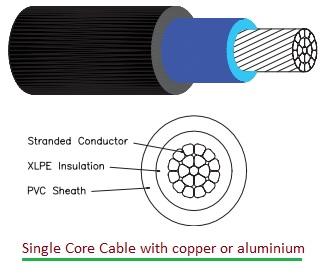Insulation Resistance Measurement and Testing
Advertisement
This article explores the concept of insulation resistance, its importance, and the methods used for testing it. We’ll also touch upon some popular manufacturers of insulation resistance testers.
What is Insulation Resistance?
- An insulator is a material that does not readily conduct heat or electricity. This is because it lacks free electrons that can move and carry a charge.
- Conductor cables are considered “insulated” when they are wrapped with an insulating material, such as PVC.
- The process of surrounding a conductor with an insulator is known as insulation.
- Insulation resistance refers to the opposition offered by the insulation material to the flow of current radially along the length of the conductor cable. Essentially, it measures how well the insulation prevents current leakage.
- Insulation serves multiple important purposes: preventing current leakage, providing physical protection against cuts and tears, and offering resistance to oils and chemicals.

Figure 1: Single Core Conductor Cable
The image above depicts a single-core conductor cable, typically made of copper or aluminum. The cable includes an insulation layer of XLPE material and a protective outer layer, often made of PVC. The insulation layer works oppositely to the conductor, keeping the current flowing along the conductor’s intended path. Think of it like a water hose ensuring that water reaches its destination without leakage along the way.
Insulation Resistance Measurement and Testing

Figure 2: Insulation Resistance Test Setup
Insulation Resistance (IR) testing plays a vital role in quality control. The test is also sometimes referred to as a “megger” test. A megohmmeter, or a specially designed insulation tester, is used for this measurement. Unlike standard multimeters, a megohmmeter provides a higher output voltage and measures resistance in megohms (MΩ) instead of ohms (Ω). It also has a very high internal resistance to withstand the high voltages used during measurement.
To measure insulation resistance, one lead of the tester is connected to the conductor, and the other is connected to the insulation material, as shown in Figure 2.

Figure 3: Insulation Resistance Formula
Typically, a DC voltage of 250, 500, 1000, 2500, or 5000 volts is used for insulation resistance measurements. Figure 3 illustrates the formula for calculating the insulation resistance of a single-core cable. In this formula:
r1represents the conductor radius.r2represents the internal radius of the sheath.lrepresents the length of the cable.ρ(rho) represents the resistivity of the insulation material, measured in Ω-m.
It’s important to note that, according to the formula, insulation resistance decreases as the cable length increases.
Popular Insulation Resistance Testers
Here’s a look at some well-known manufacturers of insulation resistance testers:
| Manufacturers | Description |
|---|---|
| Fluke | Model: 1507. Measures insulation in the range from 0.01 MΩ to 10 GΩ using insulation test voltages of 50, 100, 250, 500, and 1000 Volts. |
| HIOKI E.E. CORPORATION (Japan) | Manufactures Insulation Testers (Megohmmeters) for both low and high voltage testing, offering both analog and digital models. |
| KYORITSU ELECTRICAL INSTRUMENTS WORKS, LTD. | Offers a range of analog and digital insulation testers suitable for various voltage ranges. |
| Powerpoint Engineering | Provides electrical test, monitoring, and safety equipment, including insulation resistance testers for various applications. |
| AEMC Instruments | Offers various models of Megohmmeters designed for insulation resistance testing. |
Advertisement
 T&M
T&M 




